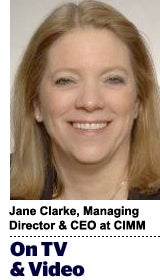 “On TV And Video” is a column exploring opportunities and challenges in advanced TV and video.
“On TV And Video” is a column exploring opportunities and challenges in advanced TV and video.
Today’s column is written by Jane Clarke, managing director and CEO at the Coalition for Innovative Media Measurement (CIMM).
The dramatic shifts in TV and premium video viewership driven by the COVID-19 crisis has confirmed that consumers care more about what they’re watching than how they’re watching it.
To the viewer, TV is one big premium video platform, with many different ways to access it. And measurement needs to align with this reality.
It’s time for a unified approach that includes all TV and premium video – one that harmonizes data across platforms for all providers across all kinds of audiences.
Historically, television has depended upon panels for measurement. Panels play a critical role and will continue to do so. But to meet the needs of the industry today, we need to start with granular exposure data that is comparable for all platforms. Panels can be used to help calibrate these data. But data must be the starting point rather than a 40,000 or so member panel.
Last month, CIMM launched an initiative to move the industry closer to this new approach. The organization is developing best practices for building large-scale, granular data sets to measure all forms of TV exposure by combining the anonymous data from both smart TVs and set-top boxes.
Smart TV data provides a broad geographic footprint and can also help refine the edit rules for on-demand and linear tuning data from set-top boxes. On the other hand, set-top box data provides a fuller picture of TV tuning for the majority of sets in a household.
These combined datasets still lack data on broadcast network audiences in the shrinking number of homes without either broadband access or pay-TV subscriptions – the so-called “over-the-air” (OTA) households. However, the combination comes closer to providing data on the majority of US households, which can then be further calibrated for OTA households and any other missing data via traditional panel methodology.
Additionally, panels are still required to understand who and how many people are in front of the TV set. We hope to bring further transparency and industry confidence in using these new hybrid (data + panel) approaches to TV measurement.
As it is, smart TVs can report tuning data in near real time, but the automatic content recognition data they collect isn’t representative of all TV sets in the average home, and it still misses some exposures due to technical limitations. Set-top box data are sourced from a much larger household footprint than smart TVs, but it also takes more time to calibrate the set-top box signals to exposure metrics and match the program schedule. The industry needs insight into how combining the data can bring a better solution for releasing more accurate tuning data faster.
Understanding how to leverage smart TV and set-top box data together will not only improve household data quality, but also help create a blueprint for more nationally representative TV exposure datasets that can be used for cross-platform planning, activation and attribution measurement across all audience segments.
The COVID-19 crisis has accelerated a change that was already underway. The challenges it presents in understanding rapidly changing behavior underscores how important large datasets are to getting a granular and accurate view of video consumption across all consumers, regardless of fragmented behavior.
The need to understand – from a holistic point of view – how TV and premium video is consumed has made clear what we already knew: the time has come for an advanced approach to measurement that is more in keeping with how consumers access content.
Coming out of this crisis, TV will not be the same. But to fully and accurately understand those changes, the industry needs a unified approach to measurement and methodology.
Follow CIMM (@CIMM_NEWS) and AdExchanger (@adexchanger) on Twitter.
View the original article on AdExchanger.
